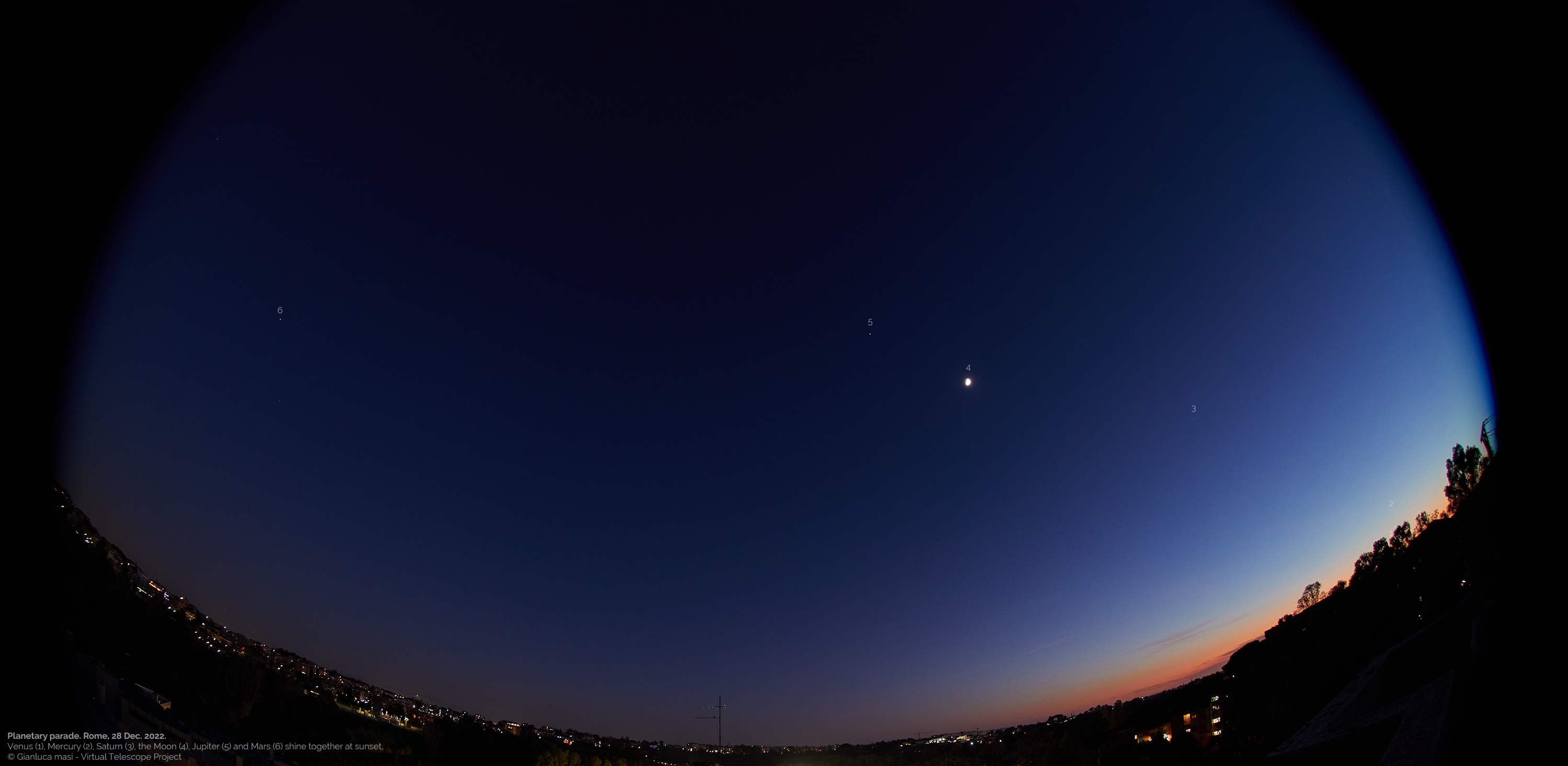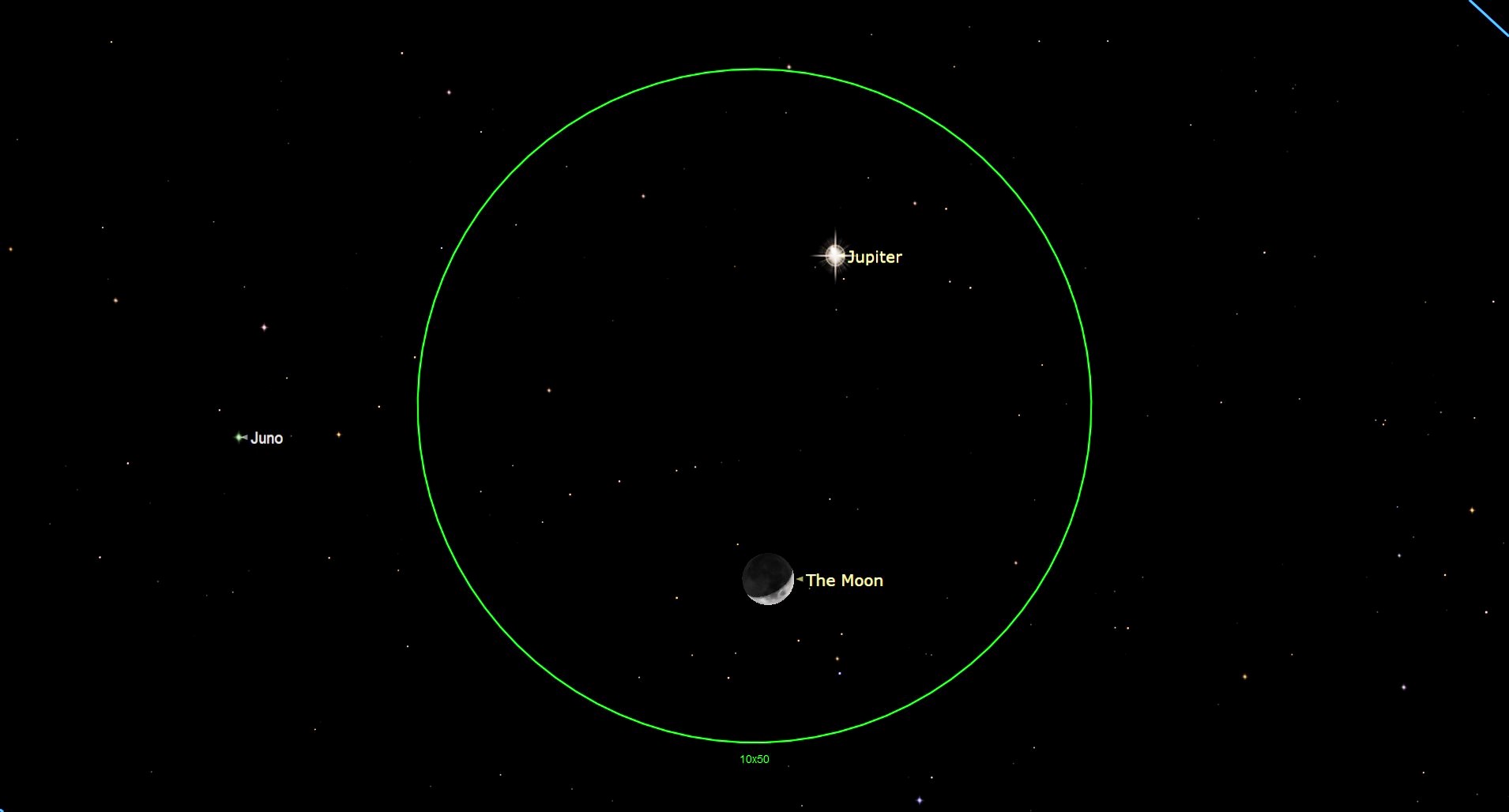See a 5-planet parade in the night sky this month. Venus and Saturn stand out.
January looks to be a bumper month for skywatchers, with five planets easily visible in the night sky.

The new year has gotten off to a promising start for amateur and professional astronomers with January 2023 proving to be an excellent time to observe the solar system's planets over Earth as five are currently visible to the naked eye.
It is later in January, however, that Saturn and Venus will take center stage, not just remaining visible to the naked eye but also moving into conjunction in the night sky. From Jan. 18 to Jan. 24, Venus, the second planet from the sun, and Saturn, the solar system's second-largest planet, will be visible together low above the horizon to the southwest as the sun sets.
The two planets will be at their closest and in conjunction, sharing the same right ascension, on Jan. 22. At this time, according to NASA, the two planets will be separated by only a third a degree in the sky. This means that Venus and Saturn should be visible together with binoculars or a small telescope. In the Sky adds that from New York City, the conjunction of Venus and Saturn will become visible around 5:18 p.m. EST (2218 GMT) 14 degrees above the south-western horizon.
Related: Night sky, January 2023: What you can see tonight [maps]
The night following this the two planets will be separated by roughly a degree and will be joined over the horizon to the southwest by the thin crescent moon.
By Jan. 25, around 30 minutes to 45 minutes after the sun sets, the moon will be above Saturn and Venus and just a degree apart from Jupiter, Saturn's fellow gas giant planet and the solar system's largest planet.
The five solar system planets that have been visible with the naked eye throughout the first month of 2023 are Mars, Jupiter, Saturn, Venus, and finally, the most difficult to spot, the tiny planet Mercury, also the closest planet to the sun.
Breaking space news, the latest updates on rocket launches, skywatching events and more!
The planets Mars, Jupiter, Saturn, Venus, and Mercury are usually visible over Earth throughout much of the year apart from when they are they are too close to the sun, a common problem in spotting Mercury as a result of its proximity to our star. It's extremely rare, however, for all five of these planets to be visible on the same night, meaning December 2022 and January 2023 have been special months for skywatchers.
One astronomer who has taken particular advantage of this is Gianluca Masi of the Virtual Telescope Project. On Dec. 28, from Rome, Italy, Masi was able to capture a single image containing all the naked-eye planets.


Want to get a closer look at the moon or Jupiter? We recommend the Celestron Astro Fi 102as the top pick in our best beginner's telescope guide.
"I captured the image from Rome earlier today, setting up my cameras and lenses on the roof of the building where I live," Masi said in an email to Space.com. "Mercury was hard to capture, as it was quickly fading."
If you're looking for binoculars or a telescope to see Saturn, Venus, or the other visible solar system planets, our guides for the best binoculars and the best telescopes have options that can help. Be sure to also check out our guides for the best cameras for astrophotography and the best lenses for astrophotography, which are helpful for both novices and pros.
Editor's Note: If you get a good photo of Venus and Saturn together in the night sky and would like to share it with Space.com's readers, send your photo(s), comments, and your name and location to spacephotos@space.com.
Follow us on Twitter @Spacedotcom or on Facebook.

Robert Lea is a science journalist in the U.K. whose articles have been published in Physics World, New Scientist, Astronomy Magazine, All About Space, Newsweek and ZME Science. He also writes about science communication for Elsevier and the European Journal of Physics. Rob holds a bachelor of science degree in physics and astronomy from the U.K.’s Open University. Follow him on Twitter @sciencef1rst.

